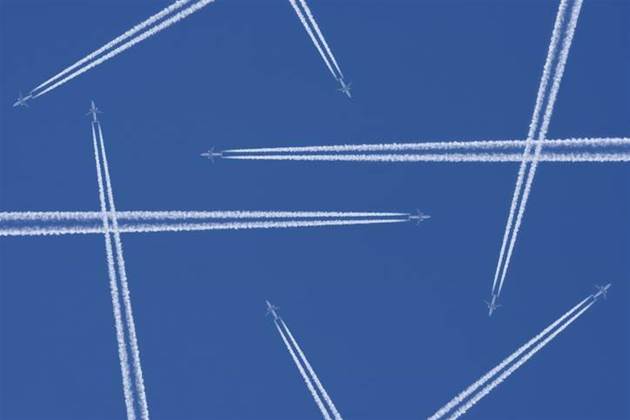Researchers at the Queensland University of Technology have developed an algorithm that uses a pair of machine learning techniques to quickly and accurately predict aircraft trajectories and flight paths.

The algorithm was designed to increase the understanding of how airspace is used from a defence perspective, but could also be applied to civilian air traffic control or any scenario in which movement needs to be analysed.
Data is fed into two neural networks - deep neural networks, which analyse data at multiple levels to predict the probability of outcomes with increasing accuracy; and memory networks, which feature a memory component that can be read from and written to.
“In essence, it’s built to measure a trajectory in and predict a trajectory out,” professor Clinton Fookes from the university’s Vision and Signal Processing discipline said.
“But as it’s taking in the trajectory of the target object, it’s also taking in the trajectories of neighbouring objects to create an awareness of what’s around the target and how those objects are moving.”
“In addition, it draws on memory networks of stored historical trajectories for the same location – these attempt to emulate how the human memory works. Those two sets of data are then analysed by another subnetwork that determines where the target will go next.”
Fookes added that algorithm can be run on a single CPU core, which would process 1000 trajectories in about 12 seconds. Multiple cores were used to bring the prediction down to a couple of seconds, and a GPU would reduce that time again.
“Compared to other image-based deep-learning tasks (which take an entire image as input) we are only taking trajectories (i.e. x,y points),” Fookes told iTnews.
“This means the input space, and entire network, is much smaller in terms of the number of parameters.”
The algorithm was trained using disparate sources of ‘big data’, including air traffic control data from Brisbane Airport, radar and camera data from pedestrian traffic at the university, and pedestrian trajectory databases from Edinburgh and New York.
“Using Brisbane Airport data from a 2015 severe weather event, we were able to test how well our algorithm coped in such a dynamic situation,” Dr Simon Denman, another project chief investigator, said.
“Its predictions were very accurate because it factored how previous pilots behaved in similar conditions to predict what the target pilot is likely to do next.”
“In civilian airspace, this algorithm could help manage drones, where we could see, potentially, an increasingly crowded and constrained airspace,” Denman added.
Fookes told iTnews that their approach has two additions compared to other prediction methods that improve performance - the use of local neighbourhood behaviour to help predict the behaviour of the person of interest, and the use of memory networks and novel memory structures to store historic behaviour.
“In some cases, these baseline models will also incorporate other data to improve performance, which our method does not need,” he said.
“For example in the aircraft path prediction scenario, prior methods often include weather data to help make predictions; we don't do this, yet by observing the history of other aircraft paths, we can maintain accuracy even in the presence of severe weather event simply by observing how other planes behave over time.”
The team, which received a $100,000 grant from the Defence Science and Technology Group for the project, hope to extend the algorithm in the future to optimise flight paths and travel routes.


_(20).jpg&h=140&w=231&c=1&s=0)
_(22).jpg&h=140&w=231&c=1&s=0)





_(26).jpg&w=100&c=1&s=0)

 iTnews Executive Retreat - Security Leaders Edition
iTnews Executive Retreat - Security Leaders Edition











_(1).jpg&h=140&w=231&c=1&s=0)



